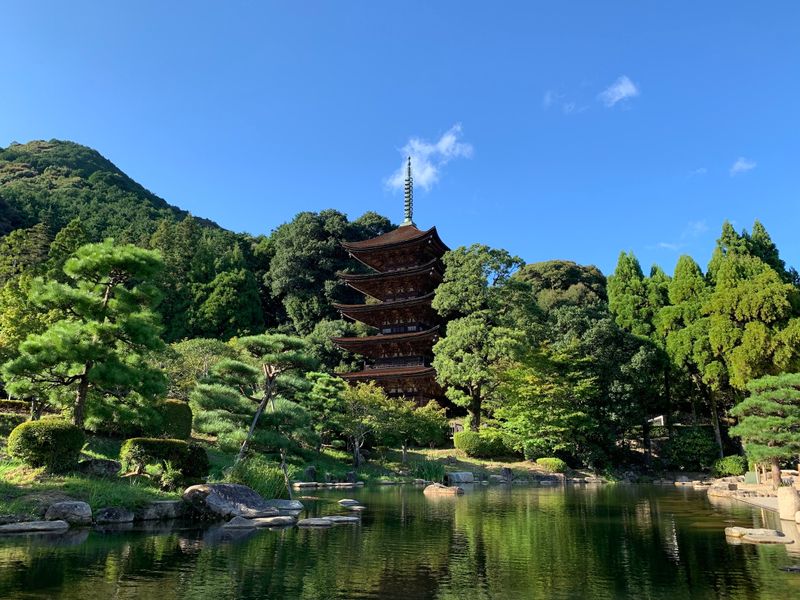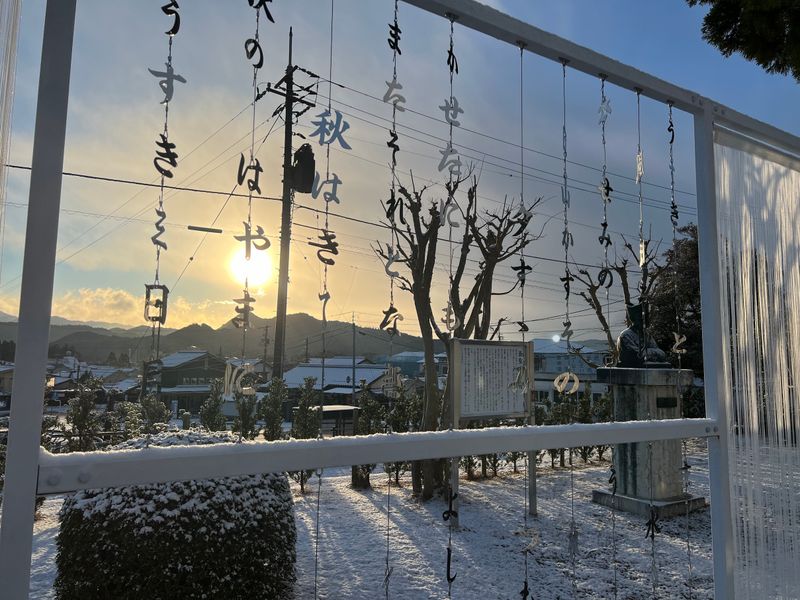Jan 30, 2024
Yamaguchi readying for life in limelight of N.Y. Times travel list

The city of Yamaguchi is hurrying to make itself ready to welcome an influx of new visitors after being thrust into the limelight of the The New York Times’ list of 52 places to go in 2024.
When The New York Times published its influential annual travel destination feature earlier in January, the western Japan city of Yamaguchi found itself at the dizzy heights of third spot on the list, bested only by Paris and the North American total eclipse zone to the top spot of places to visit this year.
Chic coffee shops, impeccable gardens, and the national treasure five-story pagoda of Rurikoji temple were among the appeals of the city picked up by the newspaper which it described as “much more interesting” than even the oft made comparisons with Kyoto might suggest.
“I’m honestly delighted that the city of Yamaguchi has been praised so highly. I hope that this will be an opportunity for many people from Japan and abroad to visit the city,” Yamaguchi Mayor Kazuki Ito said of the city’s appearance on The New York Times list during a press conference on Thursday.
The city of Yamaguchi is said to trace its origins back to Japan’s Muromachi Period (1336 - 1573) when the Ouchi Clan created a city modeled on the then-capital of Kyoto. Yamaguchi continues to celebrate the cultural heritage of the Ouchi Clan today, through the preservation and promotion of related properties that include the five-story pagoda of Rurikoji temple in the city’s Kozan Park.
“I think that it’s the history and culture of Yamaguchi as a capital of western Japan, as well as its traditional appearance, that were key factors in the evaluation,” the mayor said.
“This recognition can be an opportunity for the people of Yamaguchi City, as well as the rest of the country and the world, to gain a new perspective and awareness of the appeal of the Yamaguchi and, more importantly, the value that a regional city in Japan possesses,” he said.
Ahead of a potential influx of new visitors curious to know what all the fuss is about then, the city has started work on a number of new initiatives in preparation.
Initiatives include a strengthening of the city’s ability to welcome visitors in a number of languages by providing tourist information staff and guides with interpretation devices and by holding training sessions for interpreters and tour guides.
Other initiatives include improving the functionality of free WiFi at Kozan Park, among other locations, and providing support for the installation of cashless payment options at facilities and businesses around the city, according to the mayor.
The city is also working with transport-related organizations to establish circular-route sightseeing taxis that would improve transportation between Yamaguchi station and an area of sights and resources related to Ouchi Clan culture.
Constructed in 1442, the five-story pagoda of Rurikoji temple is one of the most celebrated of Yamaguchi's cultural resources. It is the tenth oldest five-story pagoda standing in Japan and is considered one of the three most beautiful in the country.
The pagoda at Rurikoji is notable for its roofing made from the bark of the cypress tree rather than the kind of tiling used in many other pagodas around Japan.
Restoration work on the pagoda’s roof, however, remains ongoing, leaving the structure under a special covering. The work that began in 2021 is not due for completion until March 2026.
During the restoration work temporary art installations have been installed around the site, celebrating the city’s Ouchi Clan culture and heritage. Installations include those inspired by ancient waka-style poems composed by heads of the Ouchi Clan, and a stained-glass feature which is said to reflect how the clan embraced cultures and styles from Kyoto and from overseas.

(Poetry-inspired art instillation, Yamaguchi City, western Japan.)
A projection-mapping event using the covered pagoda as a canvass which was due to finish its 10-day run on Sunday has been extended through March on the back of Yamaguchi’s appearance on The New York Times list.
2024 is also due to see Yamaguchi's Gion Festival held in full for the first time since the pandemic, according to the newspaper. Taking place in July, the festival has long been seen as smaller-scale alternative to the summer festival of the same name held in Kyoto.
Where any comparisons between Yamaguchi and Kyoto will likely be off the mark is when it comes to the number of visitors that have, or had, Yamaguchi on their own “to visit” lists. The New York Times in its own list said that Yamaguchi “suffers from considerably less ‘tourism pollution’” than Kyoto.
With a population of less than 200,000, the city of Yamaguchi received just over 9,100 overseas visitors in 2022, according to reports. Looking more broadly, figures for 2019 reveal that just 0.6 percent of overseas visitors to Japan that year went to Yamaguchi Prefecture, compared to nearly 1 in 3 who went to Kyoto, according to data published by the Japan National Tourism Organization.
Things could be about to change.
After the northern Japan city of Morioka, in Iwate Prefecture, featured at no. 2 on the The New York Times list of 52 places to go in 2023 the city received a boost in visitor numbers.
Visitors to the Bank of Iwate Red Brick Building, a Morioka City landmark, are reported to have tripled from approximately 60,000 in 2022 to around 180,000 in 2023, while the number of overnight stays in the city are reported to have increased by 17 percent, from 840,731 in 2022 (January-November) to 991,089 over the same period in 2023. The removal of pandemic-related travel restrictions and a general rebound in inbound tourism are also thought to have been factors behind the increase.
Have you ever been to the city or prefecture of Yamaguchi? What places would you recommend to visitors? Share your experience in the comments.



0 Comments